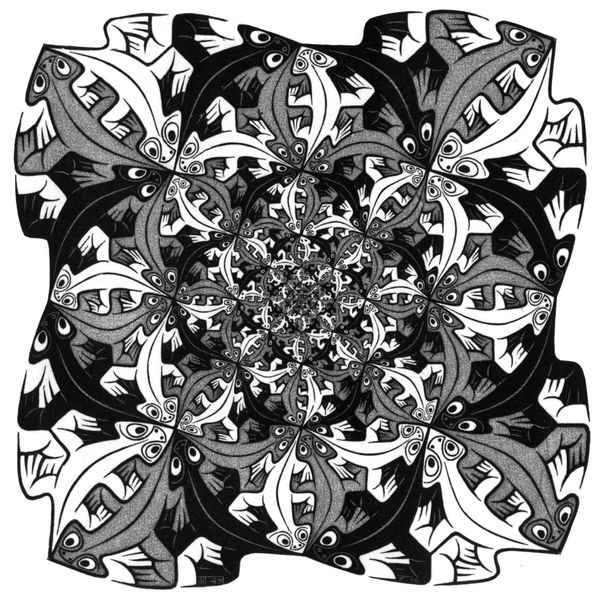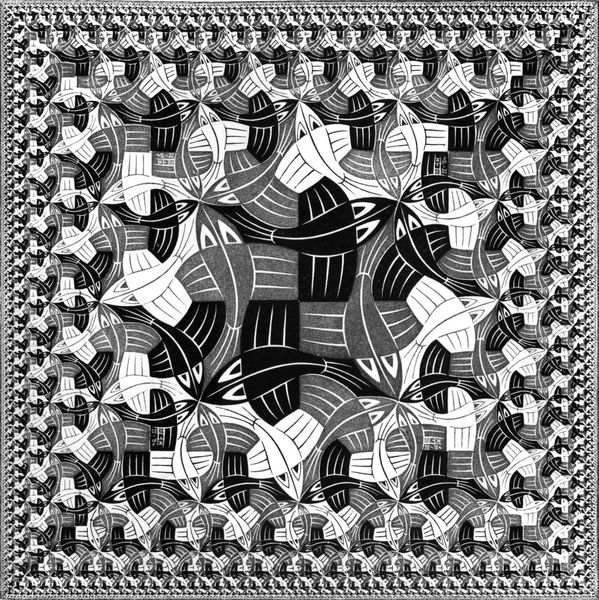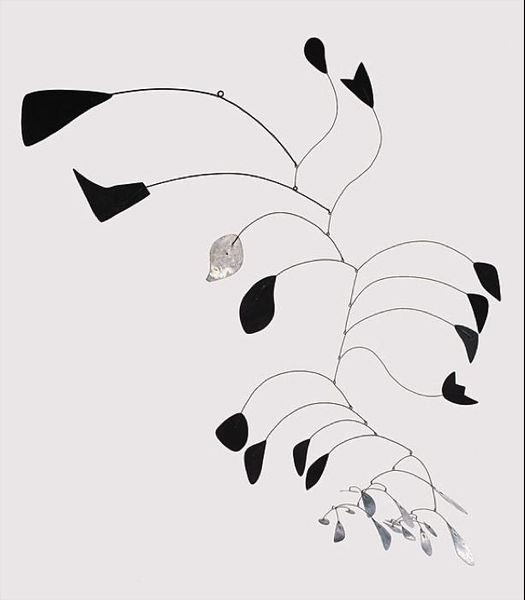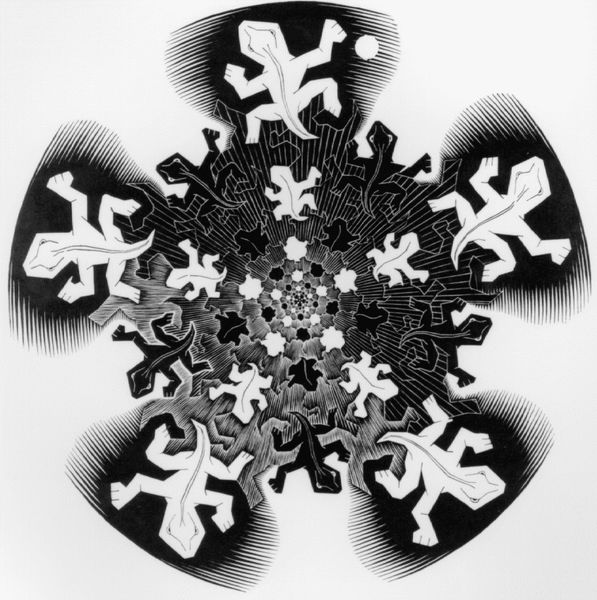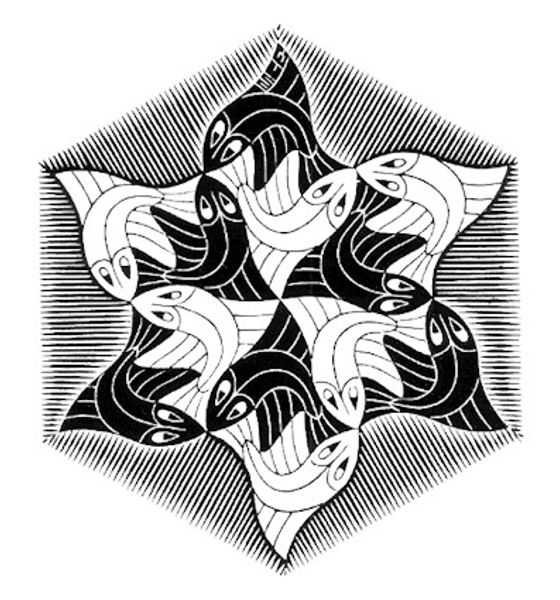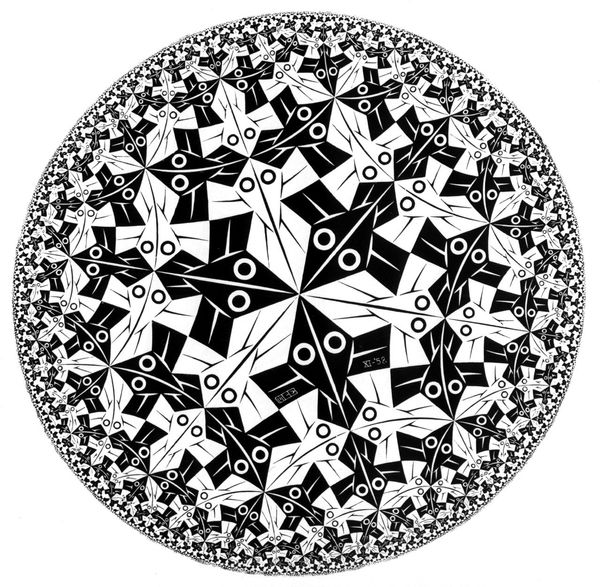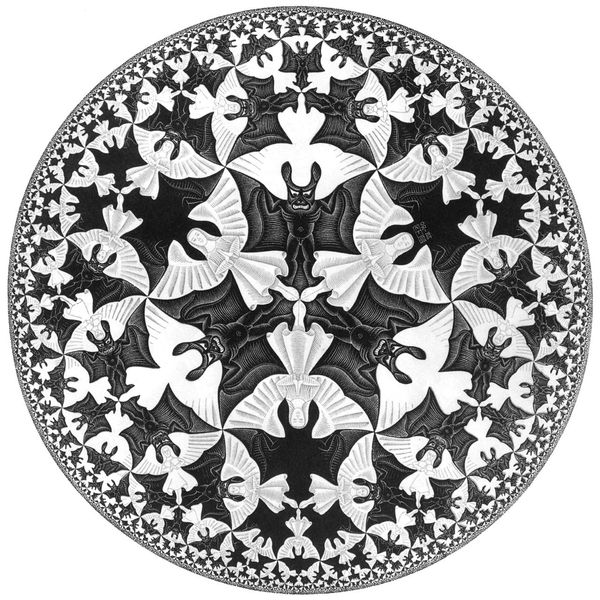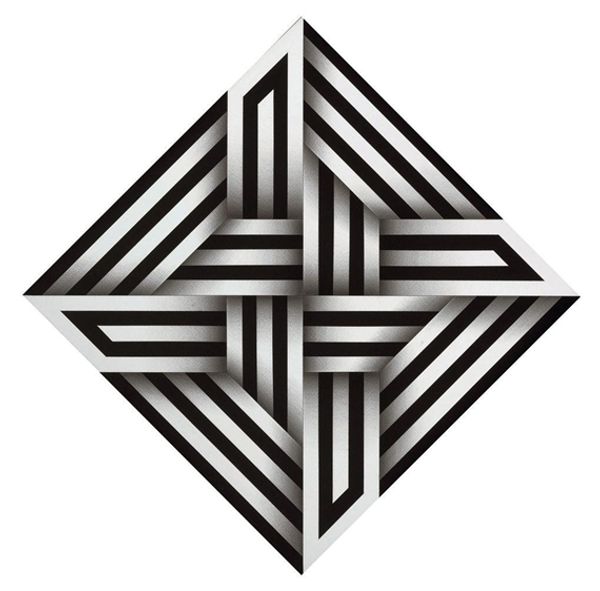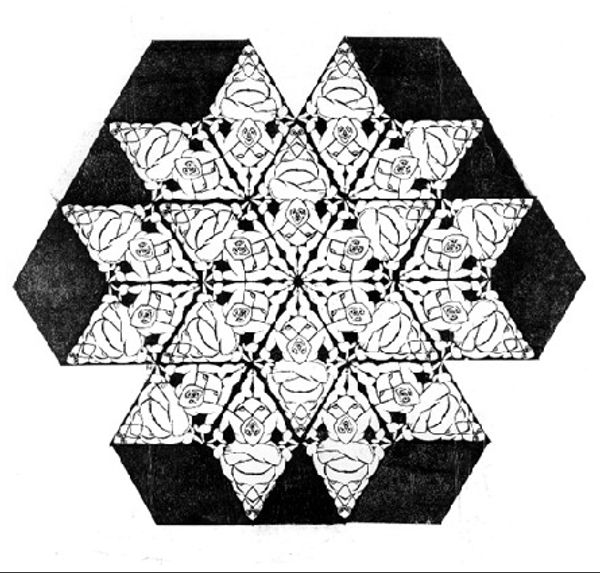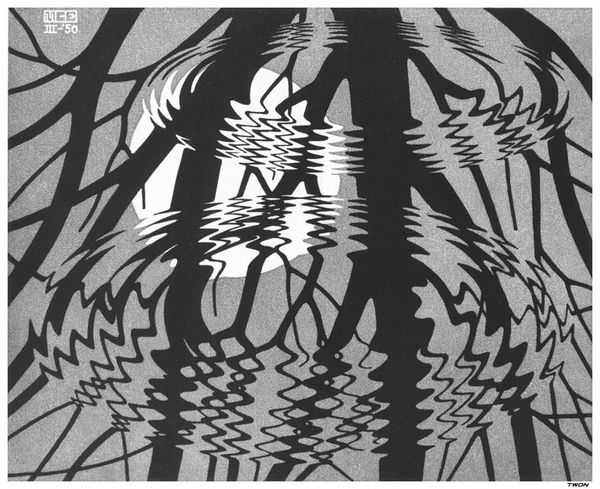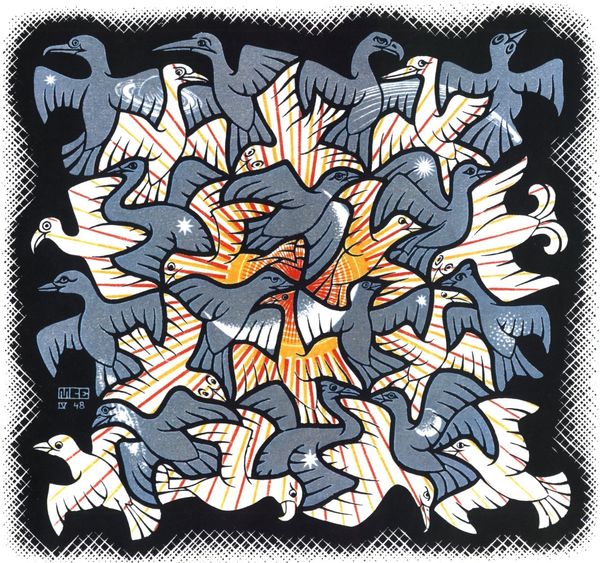
Copyright: M.C. Escher,Fair Use
Editor: So, this is M.C. Escher’s "7 Black and 6 White Fishes" from 1954, a print using graphic art techniques. I’m immediately drawn to how the black and white contrast creates such a visually striking pattern. It's almost dizzying! How do you interpret this work in a historical context? Curator: Well, think about the period. Post-war society was grappling with order and chaos, representation and abstraction. Escher, while not explicitly political, reflects this tension. Consider the institutional context: art academies were still largely pushing traditional forms, yet Escher's tessellations were gaining popularity through scientific circles and the burgeoning field of computer graphics. It’s interesting how a piece seemingly devoid of overt political content became so culturally relevant. Do you think the repetition suggests something about conformity, or perhaps mass production? Editor: That's a compelling point! I hadn't thought about it in relation to mass production, but now I see it. Maybe it's about the tension between individuality (each fish is slightly different) and conformity (they all fit together). But what about the inherent hierarchy created by '7 Black and 6 White Fishes?’ Is the white privileged by a lower amount than black? Or the opposite? Curator: It certainly provokes that reading. The deliberate naming highlights an imbalance and a question about dominance. Escher’s work invites us to contemplate how patterns of power play out, even in seemingly abstract spaces. How might different cultural contexts, then or now, impact how audiences see this visual game of more of the former against less of the latter? Editor: I never thought about patterns being such a cultural symbol. This conversation really opened my eyes to how art reflects the socio-political forces. Thank you. Curator: Indeed. Seeing beyond the purely aesthetic helps us understand art's role as a cultural mirror and agent of change.
Comments
No comments
Be the first to comment and join the conversation on the ultimate creative platform.
